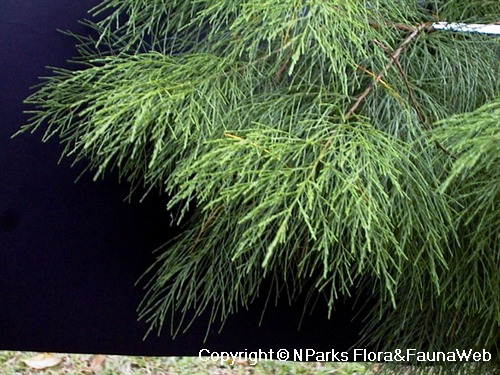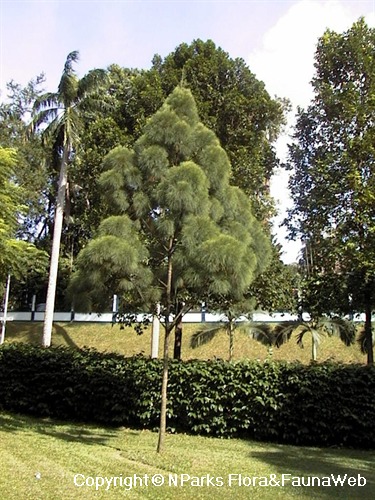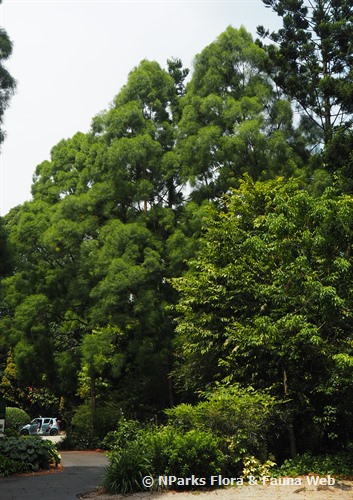
Back
Gymnostoma rumphianum (Miq.) L. A. S. Johnson
| Family Name: | Casuarinaceae |
| Synonyms: | Casuarina rumphiana |
| Common Name: | Weeping Ru |
Name
Classifications and Characteristics
| Plant Division | Angiosperms (Flowering Seed Plants) |
|---|---|
| Plant Growth Form | Tree |
Biogeography
| Native Distribution | Indonesia (Sulawesi and the Moluccas) and the Philippines. |
|---|---|
| Native Habitat | Terrestrial |
| Preferred Climate Zone | Tropical |
| Local Conservation Status | Non-native |
Description and Ethnobotany
| Growth Form | It is a tree, up to 20 m tall. |
|---|---|
| Foliage | Twigs are needle-like with many lateral branches, giving it soft bushy appearance. Leaves are tiny, scale-like and wrap around the needle-like twigs. |
| Flowers | Flowers are small, borne on a spike and occurs terminally. |
| Fruit | Fruit is roundish (3 cm diameter), woody and resembles a pine cone. |
| Habitat | It is found in primary forest and along seashores, 100 – 1000 m altitude. |
| Etymology | Gymnos, is Greek for exposed; stoma, is Greek for minute opening, which refers to the position of the stomata in the grooves of needle-twigs. Specific epithet commemorates Georg Eberhard Rumpf (1627 – 1702), who wrote Herbarium amboinense, the first account of Malesian plants. |
Landscaping Features
| Desirable Plant Features | Ornamental Form |
|---|
Plant Care and Propagation
| Light Preference | Full Sun |
|---|---|
| Water Preference | Moderate Water |
| Plant Growth Rate | Moderate |
| Rootzone Tolerance | Well-Drained Soils |
Foliar
| Mature Foliage Colour(s) | Green |
|---|---|
| Leaf Area Index (LAI) for Green Plot Ratio | 3.0 (Tree - Intermediate Canopy) |
Fruit, Seed and Spore
| Mature Fruit Colour(s) | Brown |
|---|
Image Repository
Others
| Master ID | 1656 |
|---|---|
| Species ID | 2949 |
| Flora Disclaimer | The information in this website has been compiled from reliable sources, such as reference works on medicinal plants. It is not a substitute for medical advice or treatment and NParks does not purport to provide any medical advice. Readers should always consult his/her physician before using or consuming a plant for medicinal purposes. |

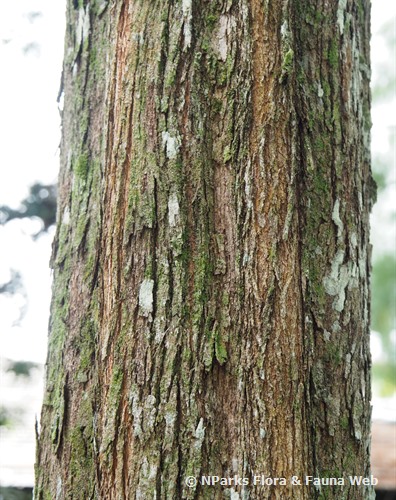
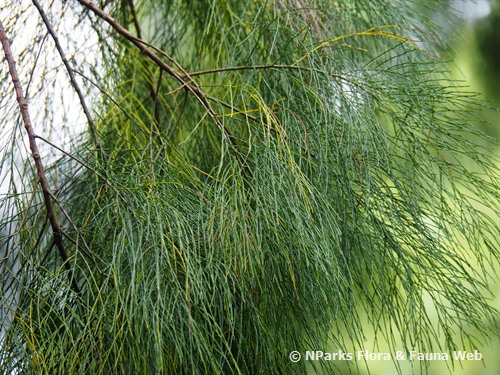


.jpg)
.jpg)
.jpg)
